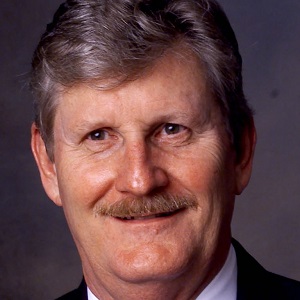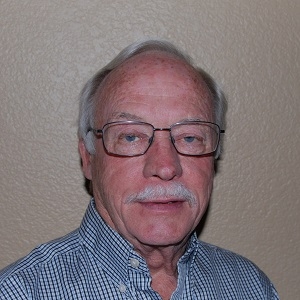Are driver-facing cameras becoming a necessity?

Trucking Industry expert and Learning Without Scars guest writer Bob Rutherford shares an article this week by Angela Coker Jones. In the trucking industry, one potential safety tool is hotly debated: are driver-facing cameras becoming a necessity?
Dash cameras have been on the market for years now – many of which offer a driver facing video solution in addition to road facing video, which has become pretty standard in the cab of a truck as fleets seek to improve safety, exonerate themselves in accidents and lower insurance costs.
Inward-facing cameras are still very much a novelty, said CarriersEdge President Mark Murrell. According to data from the annual CarriersEdge Best Fleets to Drive For survey and contest, only 21% of finalists use inward-facing cameras.
“It’s got a long way to go before people get comfortable with those,” Murrell said.
It’s no secret that most drivers don’t like driver cameras. Some fleets have chosen to invest in them anyway because of their safety benefits, and many have been successful in gaining driver approval. But driver satisfaction, privacy, and the fear of losing drivers when seats are already hard to fill has led some to avoid them.
Boyle Transportation and Skelton Truck Lines, sister companies owned by Andlauer Healthcare Group, are two carriers that have chosen to forego the driver-facing camera – at least in their over-the-road operations. The companies do use driver-facing cameras in trucks that run local routes, but much of their OTR driver population consists of women, which has led the companies to eschew them out of respect for their women drivers’ privacy concerns.
Mike Lasko, vice president of safety at Boyle and Skelton, said he would like to have driver cameras in the OTR fleet, but there are no plans whatsoever to install them.
“But that’s entirely driven by our safety performance,” Lasko said. “We have an industry-leading safety record. If that wasn’t the case – all of a sudden, if we went from first to last – that might be a different conversation, but we’re not experiencing any need to invest in that as of right now.”
The companies originally invested in side-view cameras before adding road-facing cameras to their fleets. Lasko said they were experiencing a high volume of pedestrian vehicles sideswiping their trucks. In one instance, he had a man call the number on the back of a truck and say one of their drivers came into his lane, causing him to run into a side rail. The camera showed the man was actually texting and driving.
Exoneration, Lasko said, was the driving factor that led the companies to invest in camera technology in the first place.
“The police show up and, of course, everybody’s story is the big bad truck changed lanes and hit me,” he said. “Almost overnight, once we deployed the cameras, we were able to exonerate ourselves from all kinds of false claims.”
Most carriers launched their foray into cameras with dashcams. That’s what Garner Trucking did about three years ago. Garner Trucking Chief Operating Officer Tim Chrulski said they “ripped the band-aid off” and implemented a dual driver- and road-facing camera all at once rather than testing an outward video solution first to see how it would go.
And he swears by the driver-facing feature. A big reason for that is because the camera system Garner uses – like most others – provides driver alerts that help the driver self-coach and improve poor driving habits they may not have otherwise realized they had developed.
He said most behaviors can be easily corrected. In the event of habitual poor driving maneuvers or an accident, Garner uses the driver-facing video not to punish a driver but to coach them based on their actions.
“The whole (saying) perception is reality; that perception in that moment of having an accident may be well off from the reality of what actually happened,” Chrulski said. “For a driver to be able to see and acknowledge that this was a situation that could have been corrected, there’s no better training. We all learn from our own mistakes, our own errors, so I think it’s a positive thing. It doesn’t have to be a negative thing.”
Silvia Mesina, director of safety at Real Trucking, agreed. She said her company uses cameras to proactively address potential safety hazards before they escalate into accidents by monitoring driver behavior like distracted driving, drowsiness, or aggressive behavior, for example.
Real has also implemented road-facing, side-view, and backup cameras. The side-view and backup cameras were installed to give drivers greater visibility, eliminating blind spots and mitigating backing accidents during the drop-and-hook process. The company recorded thirty-seven backing accidents in 2019. Near the end of that year, backup cameras were installed on a portion of the fleet, and by 2021, Mesina said that number had almost halved to nineteen.
She said while these auxiliary cameras help drivers enhance their road safety awareness and accident prevention skills, those additional views can’t replace the value of driver-facing cameras.
“Driver-facing cameras are crucial for driver safety,” she said. “These cameras play a crucial role in enhancing driver safety by providing invaluable insights into driver behavior.”
But Lasko said there are other safety systems that can provide insight into driver behavior without recording them. He said it depends on the type of advanced driver-assistance systems (ADAS) a fleet has in place. They “have all the ADAS” at Boyle, so a driver camera is redundant, he said.
“ADAS will tell you if the driver was paying attention,” Lasko said. “Sure, I can have a video of them being distracted, or I can just figure it out from the data that we have from all the other active safety systems.”
But if a company is light on ADAS, he said a driver camera is a good option.
In addition to exoneration and driver coaching, Murrell said driver cameras are becoming pertinent to insurance operations to explain why a company is a good risk as they use the insights into driver behavior to paint a picture of a company’s safety culture, which can be invaluable in the event of an accident.
“This is just my opinion, but if you’re a carrier operating with cameras, and you’re [only] using an outward-facing camera and side cameras, you’re only getting 70% to 75% of the story,” Chrulski said. “There’s another 25% that happens in the cab, and if you need to be able to defend the driver, defend the organization, you need to have 100% of the information.”
Angel Coker Jones is a senior editor of Commercial Carrier Journal, covering the technology, safety, and business segments. In her free time, she enjoys hiking and kayaking, horseback riding, foraging for medicinal plants and napping. She also enjoys traveling to new places to try local food, beer, and wine. Reach her at AngelCoker@randallreilly.com.
Did you enjoy this blog? Read more great blog posts here.
For our course lists, please click here.








